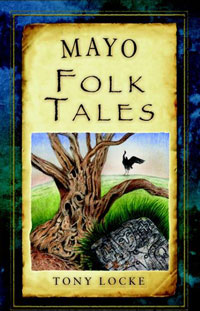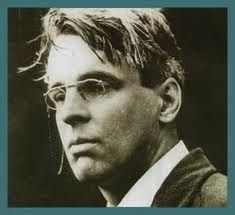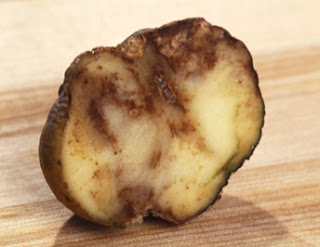The Dandelion.
I came across this story the other day and thought I’d relate it to you for as the old saying goes “Time forgets too many stories” (Turk l'ag tom leskos).
Once upon a time there was a great flood upon the earth, this was followed by a great drought when the Sun shone with a fierce heat and no rain fell. It was as though the sky was empty and the Sun stood still ruling over the earth.
As time passed the people of the earth became weary, without water they were so very thirsty, so very tired. The animals began to fall ill, the plants started to shrivel up and even the birds of the air gave up the will to fly and began to walk the earth in search of what little food remained (some still do).
The Pavee knew the rain would eventually return they just didn’t know when and the drought continued year after year until one day a beautiful Lackeen decided to speak to the Sun
“Sun, where is the rain?”
The Sun did not answer, thinking that she was too far away and that the Sun had failed to hear her she climbed a high hill and when she reached the top she asked her question again.
“Sun, Where is the rain?”
Once again the Sun did not answer her. The young Lackeen searched the sky looking for an answer to her question and there she saw a star shining brightly in the west. So she called out to the star.
“Star where is the rain”
The star flickered in the sky and in a soft voice it replied.
“I do not know, but if you follow me I will guide you to one who may have the answer you seek”
Her journey took three long and weary days. The young Lackeen followed the Star, she climbed over stone walls, pushed her way through the sharp thorns of the bramble and the whin all the time with a great thirst upon her until at long last the star stood still. There, hidden in a corner of the eastern sky was the Moon. The young Lackeen, forgetting her thirst grew very excited and called out to the Moon.
“Moon, Moon where is the rain?”
The Moon upon hearing the cries of the young girl spun in the sky like a polished plate made of silver and answered her.
“It waits in the ocean child; it waits for the Sun to call it up into the sky”
Now the young girl realising that the Sun had ignored her decided to ask the Moon for help. However, the Moon didn’t know what to do but she reached out and shook the ocean. Before this the ocean had always been calm and still but now it rolled up and down the shore although it never went above its highest wave and so it never reached the sky.
The young girl was heartbroken and fell to the ground weeping. In a voice filled with sorrow she called for the rain. Hearing her cries the Star and the Moon looked down and began to weep.
The Sun, hearing her cries looked upon her and said in a deep booming voice that filled the sky.
“The rain lies in the ocean, if I call it up into the sky it will block out all my light”
The young Lackeen cried out.
“Great Sun, do you not know that even you need to rest for your light is nothing special if we do not appreciate the dark”
“Child, do you not realise that this is what I do”
She called out to the Sun.
“Without rest, we cannot live, without rest we will die”
With one last cry of despair the young Lackeen fell to the ground and died. The days of the journey had proved too much for her, without clean drinking water, the water the rain would have brought to her, she could not survive.
The Sun shone down on the poor young Pavee and was stirred with a great sorrow for what it had done. It realised that for his pride the people had been forced to continue without rest and that without the dark of night they would never appreciate the light of day. The Sun in all its golden glory, like the Star and the Moon shed tears, tears like golden amber that when mixed with the tears of the Star and the Moon fell softly to the earth and began to sink into the soil.
Eventually these tears grew into little seeds; they shone in the light of the Sun, Star and Moon. The Sun, Star, and Moon gathered together in the sky and knowing the part that each had played in what had happened they promised the spirit of the young Lackeen that she and her people would never be forgotten and in their memory would come the rain.
The Star said, “They can look to me whether on land or water and I will guide them home”
The Moon said, “I will stir the oceans from this day forth, so all will remember her loss”
The Sun said, “I will rest every night and let the rain clouds rise whenever they wish”
Now, remember those seeds? Well eventually from those seeds came the dandelion and this was one of the many gifts of the Pavee. The dandelion is embodied with the fiery force of the Sun, Moon, and Star and grants water where it grows. Today it is said that the dandelion will only grow where good water runs and it still has the power to awaken the waters within those that pluck it from the earth (gaining it the name of “Piss in the bed).
When you look upon the dandelion remember these words
“When in flower it resembles the Sun, the Star by its dispersing seeds and its leaves and the Moon when it is in the seeding puff ball”
This story teaches of the importance of sacrifice, rest and how being open to change can help others as well as yourself.
Some facts about the dandelion:
The dandelion flower opens to greet the morning and closes in the evening to go to sleep
Every part of the dandelion is useful: root, leaves, and flower. It can be used for food, medicine and dye for coloring.
Up until the 1800s people would pull grass out of their lawns to make room for dandelions and other useful “weeds” like chickweed, malva, and chamomile
The name dandelion is taken from the French word “dent de lion” meaning lion’s tooth, referring to the coarsely-toothed leaves.
Dandelions have one of the longest flowering seasons of any plant.
Seeds are often carried as many as 5 miles from their origin!
Dandelion is a rich source of vitamins A, B complex, C, and D, as well as minerals such as iron, potassium, and zinc. Dandelion leaves are used to add flavour to salads, sandwiches, and teas. The roots are used in some coffee substitutes, and the flowers are used to make wines.
It was used in remedies for fever, boils, eye problems, diabetes, and diarrhea. . Today, the roots are mainly used as an appetite stimulant, and for liver and gallbladder problems. Dandelion leaves are used as a diuretic to help the body get rid of excess fluid. Traditionally, dandelion roots and leaves were used to treat liver problems. Native Americans also boiled dandelion in water and took it to treat kidney disease, swelling, skin problems, heartburn, and upset stomach. In traditional Chinese medicine, dandelion has been used to treat stomach problems, appendicitis, and breast problems, such as inflammation or lack of milk flow.
Story courtesy of: http://barefootpavee.blogspot.com
Hope you enjoyed the story. It is part of a rich tapestry of Pavee folklore.






























